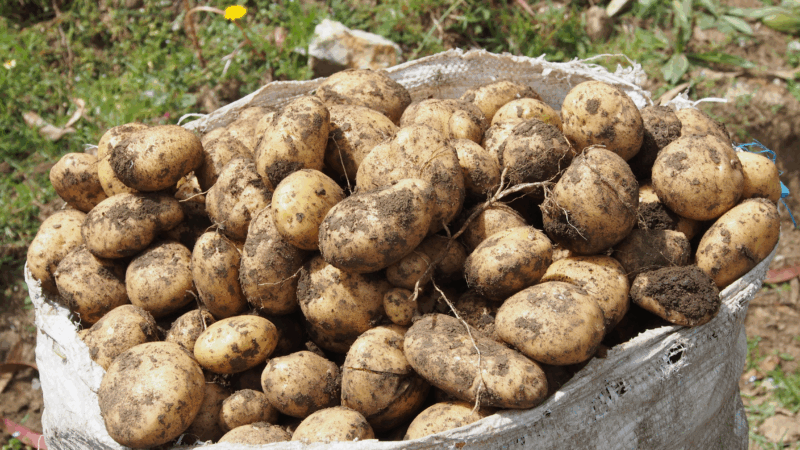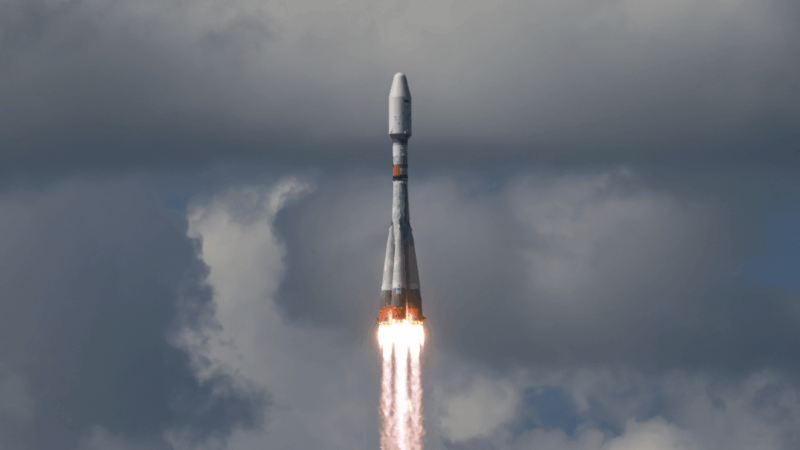The strange-but-true origin story of the humble potato
The potato: Mash it, bake it, fry it … No matter how you slice it, the potato is the very manifestation of all that is ordinary.
And yet the domesticated potato and all of its wild relatives have long harbored a genetic mystery. “We didn’t know where the whole potato lineage came from,” says Sandy Knapp, a botanist at the Natural History Museum in London.
Scientists have known that potatoes are most closely related to two groups of plants — the tomatoes and a cluster of three species called Etuberosum. “They’re very cute,” says Knapp. “They’ve got purple flowers. They’re really lovely.”
But here was the conundrum: Certain genes suggested that potatoes were more closely related to tomatoes, while other genes gave the impression that potatoes and Etuberosum had the closer relationship. Which one was it? The uncertainty gummed up our ability to draw a family tree for these starchy vegetables and all their relatives.
“That means there’s something funny going on,” says Knapp. “When something doesn’t quite fall out right, that’s where the exciting biology is.”
In a paper in the journal Cell, Knapp and her colleagues suggest the reason for the confusion was due to an ancient interbreeding event between the ancestors of tomatoes and Etuberosum that gave rise to the potato lineage. And it occurred at just the right moment for potatoes to take over vast swaths of new high-elevation habitat forming in the Andes.
The researchers hope the results will point to the creation of a greater tater — a potato that could be bred with seeds to have favorable traits that could help them withstand certain challenges ranging from disease to climate change.
A lucky union
Knapp rummages in her kitchen, eventually holding up a perfectly respectable little potato. “These ones are really good boiled,” she says.
“So all of the potatoes that we eat,” she continues, “the ones that are red, the ones that are little like this, the big ones, the ones we make into chips, all of those are one species we’ve domesticated that’s gone worldwide.”
That species originated in the Americas, where today there are 107 wild species. And the special structures that all these potato plants produce — the part of the plant that we buy, bake and butter — are underground tubers.

“They’re a way for a plant to store starch,” Knapp says, “and, in a way, persist through seasons which are not good for growing.”
The perplexing thing is that neither tomatoes nor Etuberosum — the potato’s closest relatives — have tubers.
So Knapp and her colleagues went digging for answers. First, they sequenced the genomes of, among other things, a handful of Etuberosum plants, some tomatoes, and numerous wild and domesticated potatoes. The researchers say it’s the most exhaustive analysis of potato genomes ever conducted.
Strikingly, they found that potatoes have a balanced mix of genes from both tomatoes and Etuberosum. This suggested that long ago, ancestors of these two groups hybridized. That is, they interbred to create a new kind of plant, which could do something that neither parent was capable of — grow tubers.
“That’s very important,” says Yiyuan Ding, a bioinformatics Ph.D. student at Huazhong Agricultural University and a lead author of the paper, because this is how a whole new plant lineage came to be and how the ancestor of modern-day potatoes was born.
“It’s a chance event,” says Knapp. “That’s the thing about evolution … sometimes things work, and sometimes they don’t. And we’re quite lucky in this case that this one worked … ’cause otherwise we wouldn’t have potatoes.”
Conquest of the Americas by tuber
In another experiment, when the researchers took potato plants and knocked out one key gene that came from the tomato, or another key gene that came from Etuberosum, the potato struggled to make its characteristic tubers.
This meant that “neither tomatoes nor Etuberosum have tubers, but the two sets of genes that make tubers came from each of those two parents,” says Knapp. Tuberization, it turns out, is a complex trait controlled by multiple genes that the potato inherited.
Scientists say the interbreeding event occurred some 9 million years ago, which happened to be excellent timing for the potato. This is when the Andes were forming and lots of cold and dry high elevation habitat was appearing.
Tomatoes would have had a tough time surviving in the mountains because they prefer hot and dry conditions. Same for Etuberosum, which flourishes in cold and wet areas.
But if the new potato lineage was anything like the potatoes of today, which are happy to grow in cold and dry conditions, these plants would have been well-suited to mountain life.
“Potatoes combined the best of both worlds and explosively speciated in the Andes,” says Knapp. “If there’s a plant that can invade and take advantage, then off it goes.”
The potato’s successful exploitation of the alpine habitat was likely made possible by its tubers, which could store energy and persist in the newly made mountains, biding their time until the conditions become more favorable.
The “tuber is a good weapon” against the harsh high elevation conditions, says Zhiyang Zhang, a plant genetics Ph.D. student at the Chinese Academy of Agricultural Sciences and a lead researcher on the study. “And when the environment improve[s], you can [reproduce] quickly.”
Then, a mere six, seven thousand years ago, people near Lake Titicaca in present-day South America domesticated a single species. This gave rise to all the varieties of potatoes we consume today, transforming the accidental tuber into something else — “a gift for human[s],” says Zhang.
Making the potato extraordinary
The results may also have a practical application. Potatoes are not currently planted with seeds. Instead, farmers use little chunks of potato in the soil to create new potato plants. “But that means it’s genetically identical to all the other potatoes,” says Knapp, “which makes it very vulnerable to diseases” and other threats.
But this study could pave the way for a different approach.
“We can use the tomato or Etuberosum to perhaps do some genetic engineering to improve the potato,” Knapp says. One such improvement would allow the plant to produce reliable seeds that farmers could use to breed potatoes resistant to pests, a changing climate, and other environmental challenges.
Simply put, “the tomato can be the future of [the] potato,” says Zhang.
“The origin of potatoes [is] incredible,” says Iris Peralta, an agronomist at the National University of Cuyo in Argentina who wasn’t involved in the research. “You had two things and something completely different emerged.”
Peralta is pleased to see modern genomic tools applied to resolving this mystery surrounding the potato’s origin story. And she believes this kind of hybridization event has likely created other plant lineages too. “It’s a pattern we can assume that is an important mechanism to generate variability,” she says.
The authors of the paper agree. “Through hybridization, you can generate many [new] combinations in a short time,” says Zhang. “And you can generate more species to adapt [to] changeable environments.”
Knapp adds, “Hybridization is a real force in evolution that allows for the release of variation, which allows diversification and evolution to happen.”
Of course, not all interbreeding events have produced results as wildly successful as the potato. Such events often lead to a dud.
But sometimes, just sometimes, they lead to a spud.
Transcript:
AILSA CHANG, HOST:
The potato – mash it, bake it, fry it. You would be forgiven for thinking it’s kind of ordinary. But the potato’s origin story, it’s pretty fascinating, and we don’t really know all the details yet. Now a team of researchers thinks that they know more about how the potato came to be. Ari Daniel has our story.
ARI DANIEL, BYLINE: OK, do you have a potato in your kitchen, by chance?
SANDY KNAPP: Yep, one second. I just have to get it out of the bag. It’s a teeny, tiny one.
DANIEL: Sandy Knapp, a botanist at the Natural History Museum in London, holds up a perfectly respectable little spud in her Zoom window.
KNAPP: So all of the potatoes that we eat, the ones that are red, the ones that are little like this, the big ones, are one species we’ve domesticated that’s gone worldwide.
DANIEL: A species that came from South America. Today, there are 107 wild potato species across the Americas, and the thing that all potato plants produce is underground tubers, which is the part of the plant we buy in the supermarket.
KNAPP: They’re a way for a plant to store starch and, in a way, persist through seasons which are not good for growing. But what we didn’t know was where the whole potato lineage came from.
DANIEL: Now, scientists have known that potatoes are most closely related to two groups of plants – the tomatoes and a cluster of three species called E. tuberosum.
KNAPP: They’ve got purple flowers. They’re very cute. They look like potatoes, but they don’t have tubers.
DANIEL: Tomatoes don’t have tubers either, which was puzzling. In addition, certain genes suggested potatoes were more closely related to tomatoes. Yet, other genes implied potatoes and E. tuberosum were closer.
KNAPP: There’s something funny happening. Why?
DANIEL: So Knapp and her colleagues went digging for answers. They sequenced the genomes of numerous potato plants and their relatives and found that potatoes have a balanced mix of genes from both tomatoes and E. tuberosum, suggesting that long ago, ancestors of these two groups hybridized. That is, they interbred to create a new kind of plant – one that could do something neither parent was capable of.
KNAPP: Which was to grow tubers. Neither tomatoes nor E. tuberosum have tubers. But the two sets of genes that make tubers came from each of those two parents.
DANIEL: And with that, a whole new plant lineage came to be, and the ancestor of modern-day potatoes was born.
KNAPP: It’s a chance event. You know, that’s the thing about evolution is sometimes things work and sometimes they don’t. And we’re quite lucky this one worked because otherwise, we wouldn’t have potatoes.
DANIEL: The inner breeding occurred some 9 million years ago, which happened to be excellent timing for the potato. It’s around when the Andes were rapidly rising and lots of cold, dry, high-elevation habitat was appearing. Tomatoes couldn’t make it there. They prefer hot and dry. and E. tuberosum flourishes in cold and wet areas. But if the new potato lineage was anything like the potatoes of today, which are happy to grow in cold and dry conditions…
KNAPP: Potatoes combined the best of both worlds and explosively speciated in the Andes.
DANIEL: Something likely made possible by their tubers, which could store energy and persist in the harsh mountains.
KNAPP: Sort of the secret of their success, in a way.
DANIEL: The results are published in the journal Cell. Iris Peralta is an agronomist at the National University of Cuyo in Argentina who wasn’t involved in the research.
IRIS PERALTA: You had two things, and something completely different emerged. The origin of potatoes – incredible.
DANIEL: She believes this kind of hybridization event has likely created other plant lineages, too. In addition, this study may have important applications, says Sandy Knapp.
KNAPP: We can use the tomato or E. tuberosum to perhaps do some genetic engineering to improve the potato.
DANIEL: So that it might produce something farmed potatoes don’t currently have – reliable seeds for breeding potatoes resistant to disease and a changing climate, leading, one day, perhaps, to a greater tater.
For NPR News, I’m Ari Daniel.
(SOUNDBITE OF GEORGIA SONG, “IT’S EUPHORIC”)
Pipe bomb suspect told FBI he targeted U.S. political parties, memo says
The man accused of placing two pipe bombs in Washington on the eve of Jan. 6, 2021 told investigators someone needed to "speak up" for people who believed the 2020 election was stolen, prosecutors said Sunday.
Chinese military stages drills around Taiwan to warn ‘external forces’
The drills came after Beijing expressed anger at U.S. arms sales, and a statement by Japan's prime minister saying its military could get involved if China were to take action against Taiwan.
Trump and Netanyahu to meet in Florida at a crucial moment for the Gaza ceasefire
President Trump could use the face-to-face at his Mar-a-Lago estate to look for ways to speed up the peace process, as Israel's leader has been accused of not pushing his side to move fast enough.
‘Bomb cyclone’ forecasted to bring heavy snow, blizzard conditions and dangerous travel
A 'bomb cyclone' is intensifying severe winter weather for millions of people across the U.S. The system is expected to knock out power and disrupt holiday travel.
Russia sends 3 Iranian satellites into orbit, report says
The report said that a Russian rocket sent the satellites on Sunday from a launchpad in eastern Russia.
Viral global TikToks: A twist on soccer, Tanzania’s Charlie Chaplin, hope in Gaza
TikToks are everywhere (well, except countries like Australia and India, where they've been banned.) We talk to the creators of some of the year's most popular reels from the Global South.








